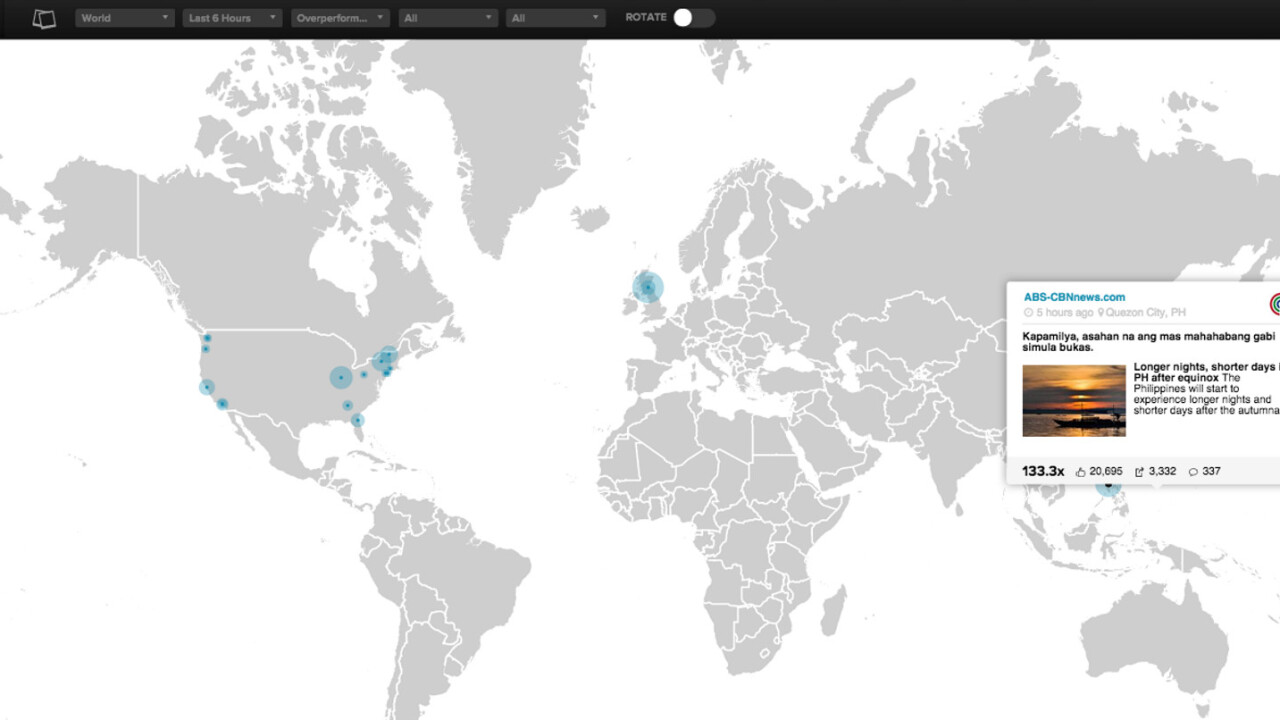
As the march of technology (and the death of the traditional newsroom) continues, digital publishers and journalists (like us!) need to continue to adapt to stay ahead of the game and successfully grow audiences.
Here, we’ve got some of the best social media tools a digital newsroom can use to to find, source and promote stories by harnessing the power of the mass of publicly available data.
What follows is a short list of tools that we’ve either used in the past, use currently or are definitely keeping an eye on for the future. No single tool is going to make your content or writing better, but if you learn how to use the ones that work for you effectively you’ll almost certainly find a larger audience.
SocialFlow
Everyone knows that, along with search, social is the life-blood of many websites nowadays. But ‘getting social right’ isn’t as easy as you might think.
Judging when might be the best time to post your rivers (or trickles) of content will play a big part in how successful that content is in terms of being shared, read, watched, commented on etc.
At its most useful, SocialFlow tries to make this process easy by allowing you to add social posts to a main feed and then using its algorirthm to determine the best time to send those messages out, whether that’s to Facebook, Twitter or Google+.
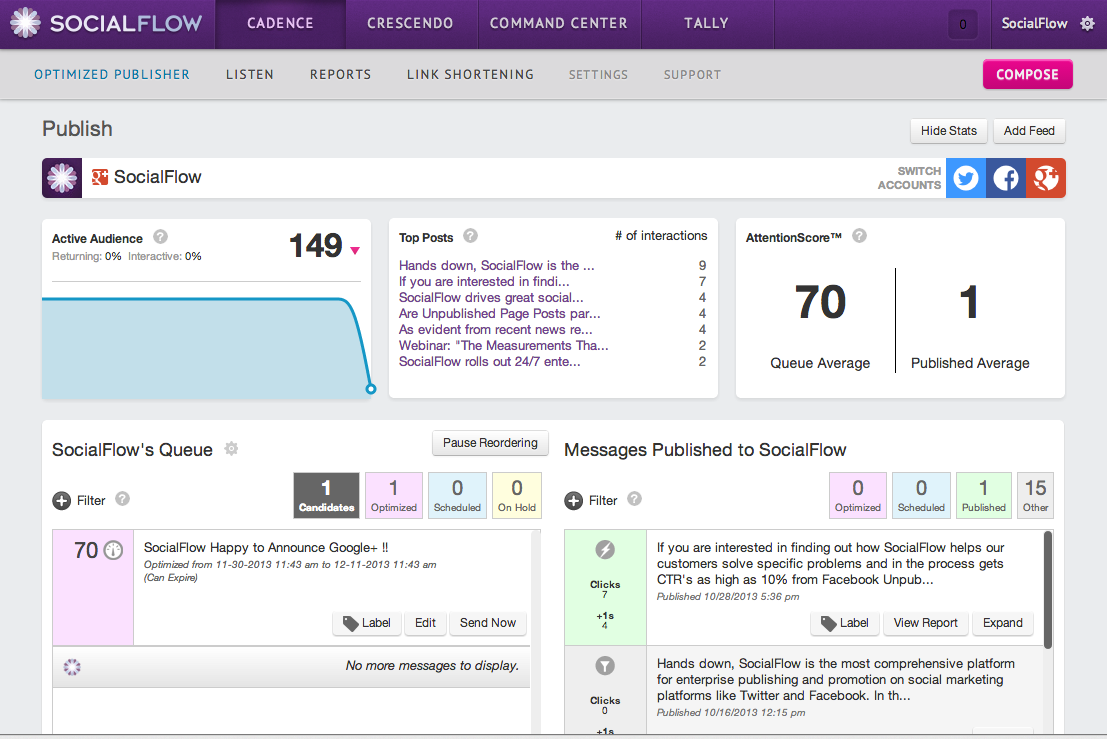
All you need to do is set a time period, and then select whether the content ‘must publish’ or ‘can publish’, where the former ensures the message goes out no matter what, and the latter only sends it if SocialFlow thinks it will perform well.
Of course, you can still opt to do things manually and primarily use SocialFlow as a tool for pushing out posts immediately or at specific scheduled times.
One of the nice things about the scheduling feature is that if you post all your content via SocialFlow, you can specify certain parameters to ensure that not too much of your content is pushed out at the same time. So, for example, you could set a rule that doesn’t allow the next post in your Facebook queue to go unless there’s been at least a thirty minute or one hour gap.
As well as handling the scheduling of your social posts, the platform also gives a few real-time metrics about the number of people interacting with content across the three social channels. You can also use it to surface trending terms and ‘top engagers’ with your content.
Pricing for Social Flow will vary according to the organization, but it can be expensive, depending what your idea of expensive is.
Dataminr
Dataminr is one of the newer tools to make this list, but it makes it on for good reason.
Essentially, it offers users the chance to get ahead of the news before it really ‘breaks’ by monitoring social signals on Twitter.
That might sound like a lot of other tools, but this one really works – you might see a single tweet surfaced from a user with almost no followers, or you might see breaking headlines from the world’s biggest news organizations as they happen.
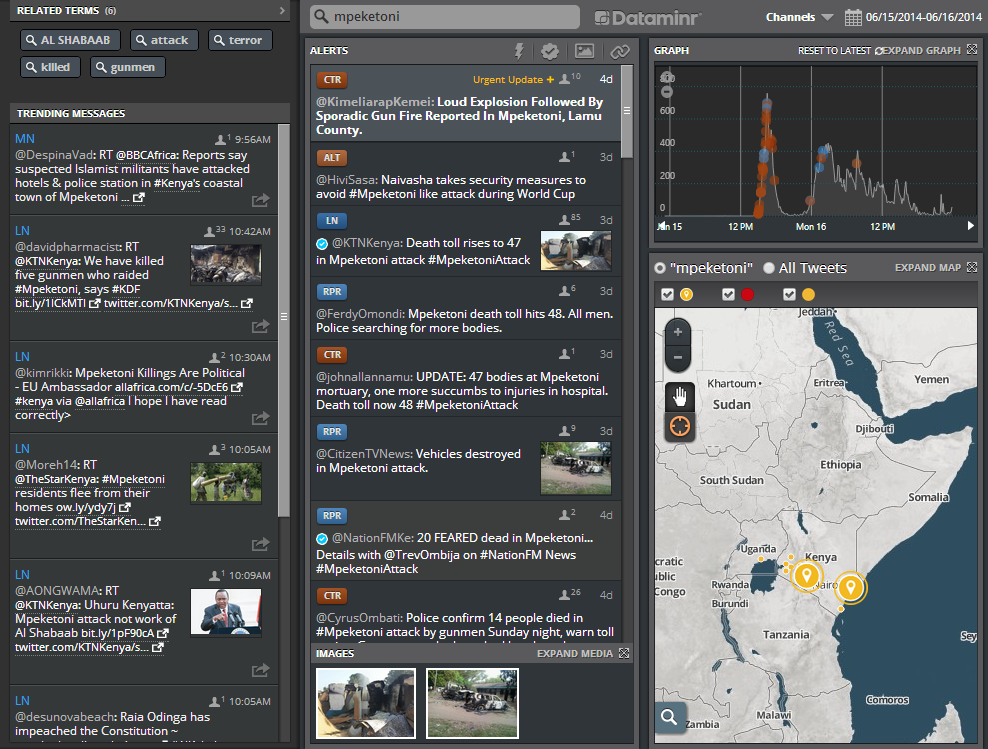
Obviously, ‘every topic, covering the entire world’ would be a pretty large beat to keep across, so you can add filters to narrow in on the information in which you’re most interested.
Clearly, for TNW, we’d set filters to something like ‘global’ relevance and focused on the tech category. You might be more interested in local political news though, or anything else.
It’s also handy if you want to track back in time to see the first mentions of a particular news item as it’s bubbling up.
Pricing, however, might put you off – it’s done by organization and not per user, which, again, means it could end up as an expensive option.
Whether or not it’s worth the money to you probably depends on the type of news you cover and how timely you need to be with it.
NewsWhip Spike
NewsWhip Spike is sort of an amalgam of the two services we’ve looked at above already. In one sense, it’s like Dataminr in that it focuses on trying to bring you the first inklings of a story before it turns into a fully-blown affair, but the tool does it by monitoring engagement with articles and topics across a whole range of different platforms, including all the usual suspects, large and small.
To make it easy to work out the lifespan of engagement on articles, each one is given a handy ‘Velocity’ score showing how and when it was most popular.
You might want to use it to try and get ahead of the news, or you might just want to parse the data to see what the most popular stories and topics are at a glance.

Like with the other tools, you can filter by region or topic to cut down on the irrelevant noise.
You can also use it to monitor a specific phrase or person, or a rival’s domain, should you want to keep tabs on them.
Pricing for Spike starts from $299 for bloggers or small PR firms, rises to $599 for newsrooms and mid-size PR firms. Any business larger than this will need to get in touch for custom pricing.
BuzzSumo
BuzzSumo is similar to the other tools here, but focuses less on providing real-time insights than something like Spike, and instead shows the biggest trends and influencers over a given time. If you then pay attention to those sources, you’re more likely to find news quicker.
It includes historical data as well as ‘last 24 hours’ but if you need minute-by-minute tracking of bubbling topics, BuzzSumo isn’t the tool for you.
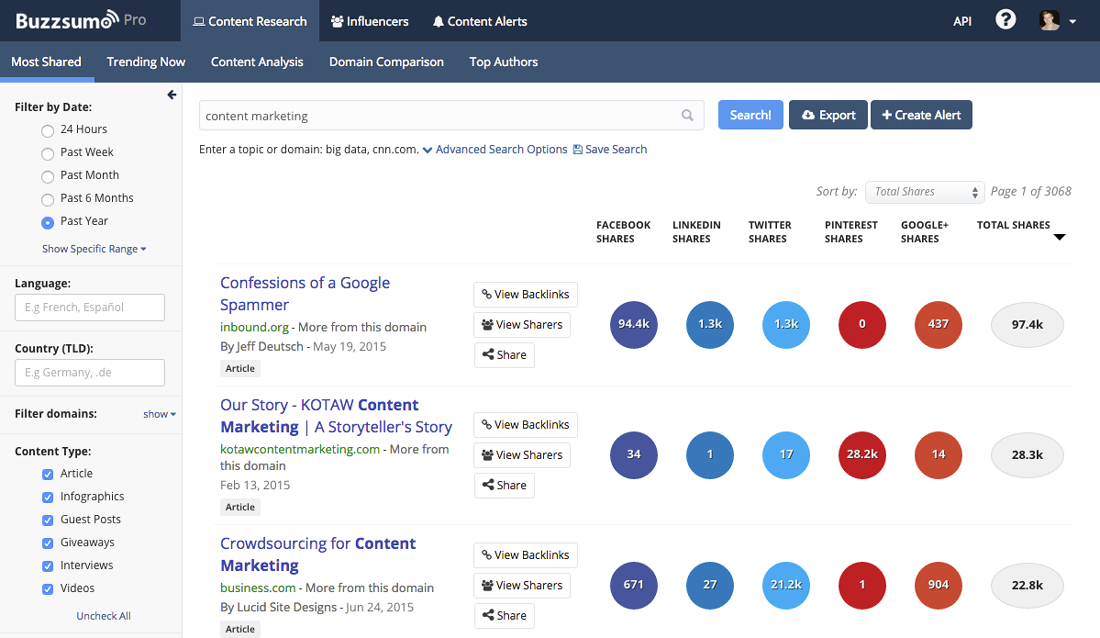
As it has a less far-reaching remit than something like Spike – and focuses less on ‘breaking’ real-time updates – it comes with a lower price tag.
What BuzzSumo is good at, however, is providing a solid one-stop shop for researching popular topics and how widely the resulting content is shared across different sites.
You can also set up content alerts, so that you are notified whenever your monitored keywords and brands are mentioned. To save you getting pinged every time a new article is posted on your topic, you can set sharing thresholds too. So, for example, you might want only want to be informed once a page has been shared on Facebook at least 500 times.
‘Pro’ users will need to cough up $99 per month, while larger teams will need to go for the ‘Agency’ plan, which costs $299 per month and includes API access, support for up to 50 custom alerts, unlimited searches and more. Enterprise users will need to get in touch for pricing.
Crowdtangle
Crowdtangle is a digital newsroom tool that spreads across the categories of ‘social listening’ and analytics. A little like Spike does, in some ways.
From the Crowdtangle dashboard, you can keep track of how your own (or competitor’s) posts and accounts are performing are across Facebook, Twitter, YouTube, Instagram and Vine. It also lets you track performance against a single keyword, or across a specific event too.
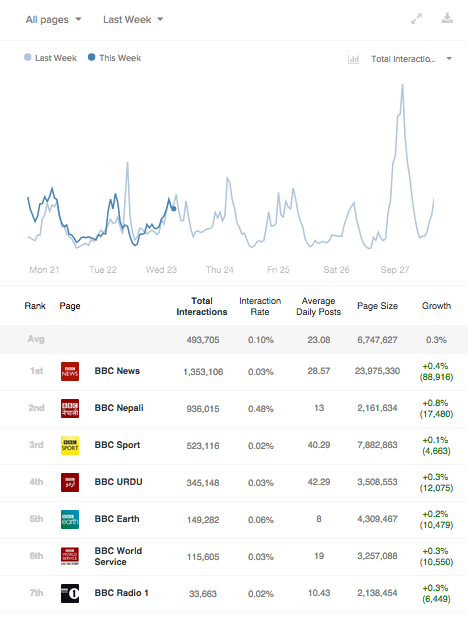
By analyzing the data, the platform shows you what content performs best at specific times, and lets you tweak the underlying algorithm to surface more relevant data. So, if shares are less important to you than favorites or comments then you can adjust accordingly.
If your team uses Slack (as we do), then you can also integrate Crowdtangle with that to get updates sent to a dedicated channel.
You can also use it to set up customizable alerts and digests on a particular topic, and there’s an API you can plug into too, if you need that.
As an extra fun fact, it’s the system that underpins the trending stories section on Facebook’s Signal platform aimed at journalists and newsrooms.
Bonus tool!
NPR’s Lunchbox
Lunchbox isn’t like any of the tools we’ve looked at here, in more than one way.
Firstly, it’s a collection of simple tools for helping you make personalized content for sharing across social networks, rather than a ‘social listening’ or distribution tool. Secondly, it’s totally free – making it a simple and appealing option for smaller outfits.
The ‘Lunchbox’ is made up of three tools – Quotable, Factlist and Waterbug. The most recent versions are all included in the single Lunchbox download.

Waterbug lets you quickly create a watermarked image with attribution; Factlist lets you create a factual bullet point list, which can be useful for sharing breaking news (or updates) quickly across social networks. Quotable does a similar thing, turning quoted selected text into an easily shareable image.
Each of these tools lets you control things like text size, background and branding too.
Get the TNW newsletter
Get the most important tech news in your inbox each week.




